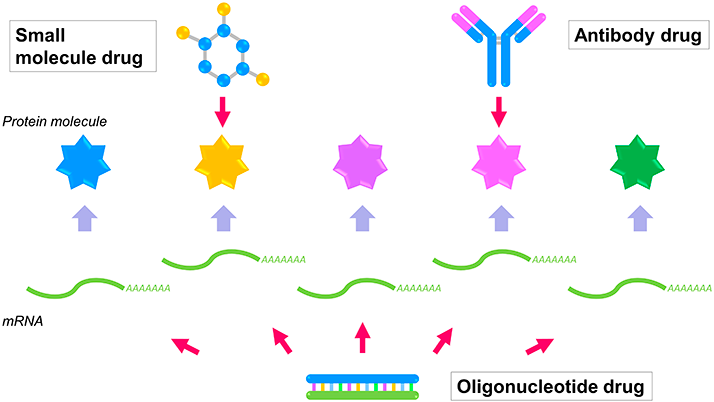Oligonucleotide drug is a new pharmaceutical modality that has been developing rapidly in recent years and is attracting a great deal of attention. The most important feature of oligonucleotide drugs is that they can target molecules that traditional drug modalities, such as small molecule drugs and antibody drugs, are unable to act on. Oligonucleotide drugs specifically bind to and degrade RNA molecules such as mRNA, thereby eliminating the protein molecules produced by the mRNA. Protein molecules that can be targeted by small molecule and antibody drugs are limited to those with specific structures. Therefore, it is believed that many useful protein molecules that could be targets for various diseases remain untapped as undruggable targets that cannot be targeted by small molecule or antibody drugs. Because oligonucleotide drugs can also target these molecules, they are expected to be able to create drugs for diseases that have been impossible to discover in the past.

Small molecule and antibody drugs can act only on protein molecules with a specific structure (small molecule drugs: yellow protein molecules, antibody drugs: pink protein molecules). Oligonucleotide drugs can act on all types of mRNA (yellow-green), regardless of the structure of the protein molecules. Therefore, target molecules (blue, purple, and green protein molecules) that small molecule drugs and antibody drugs could not act on can be dealt with, and the possibility of target molecules (target space) can be expanded.